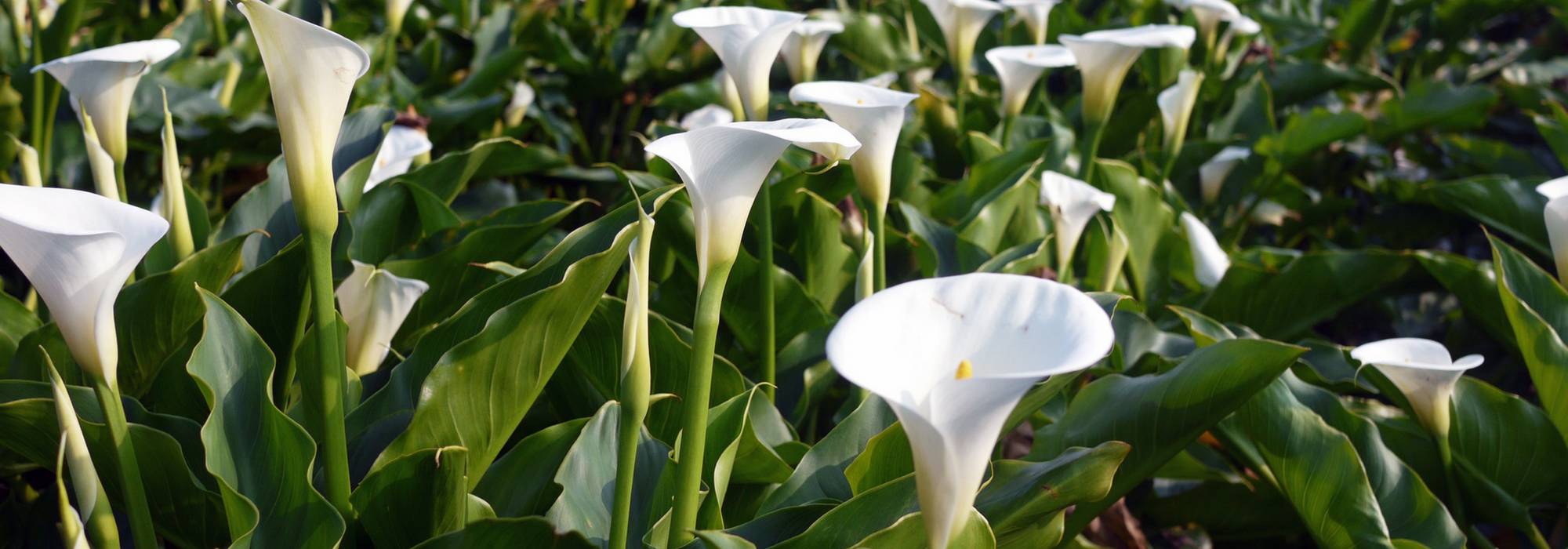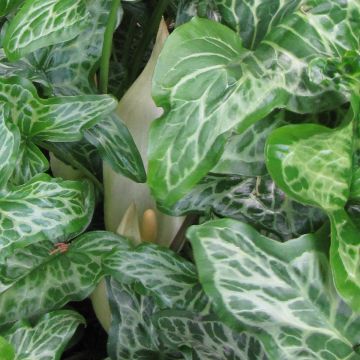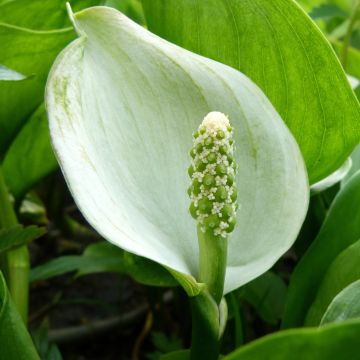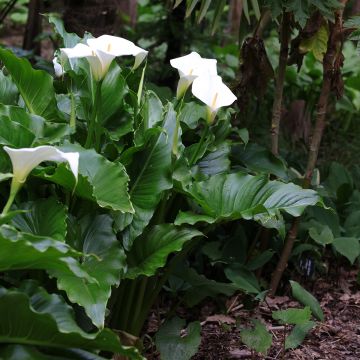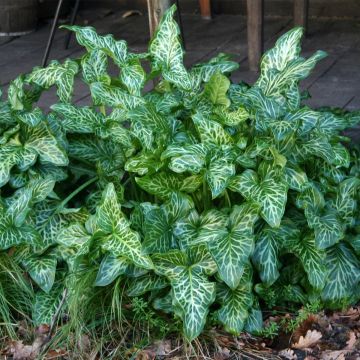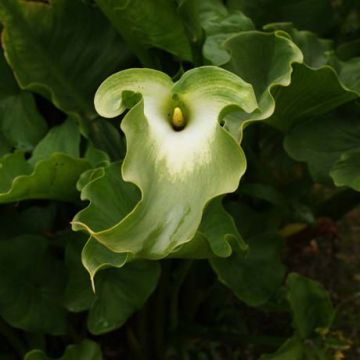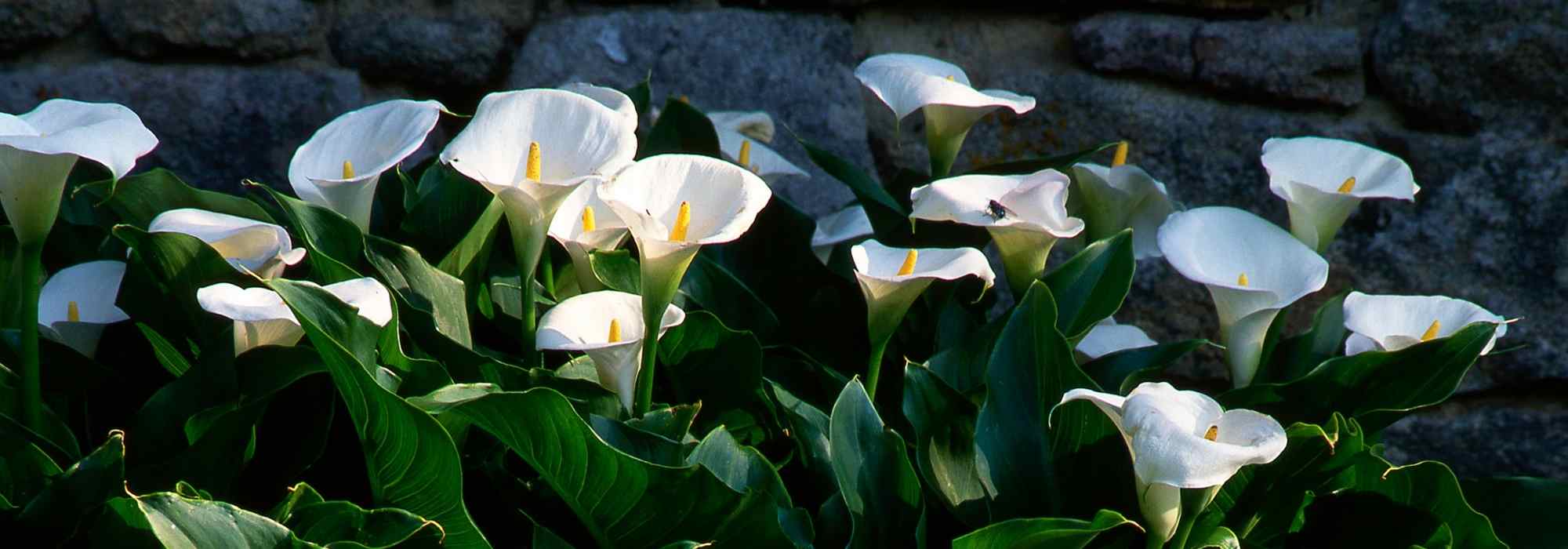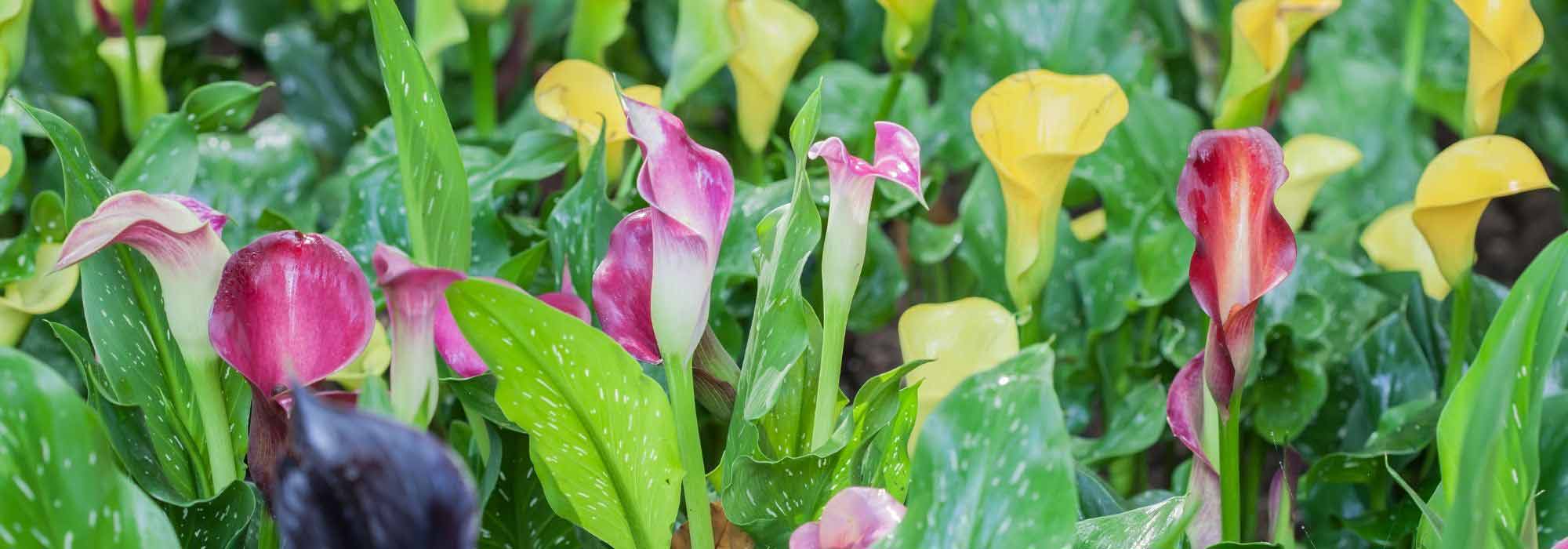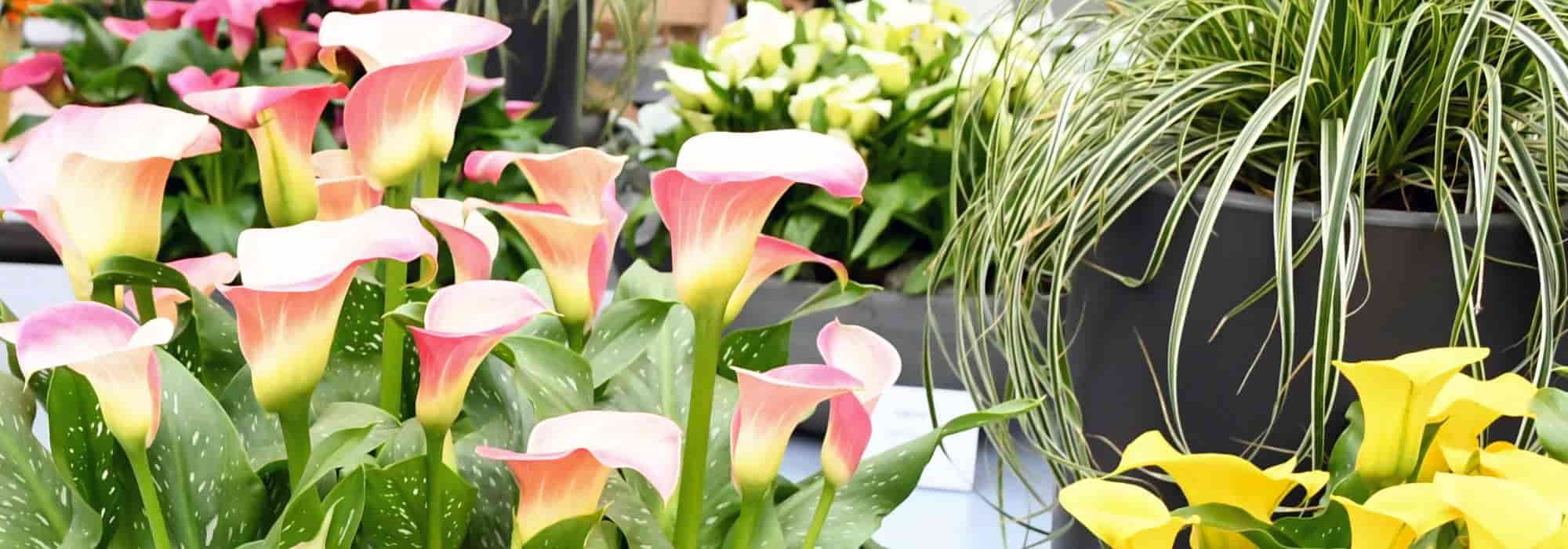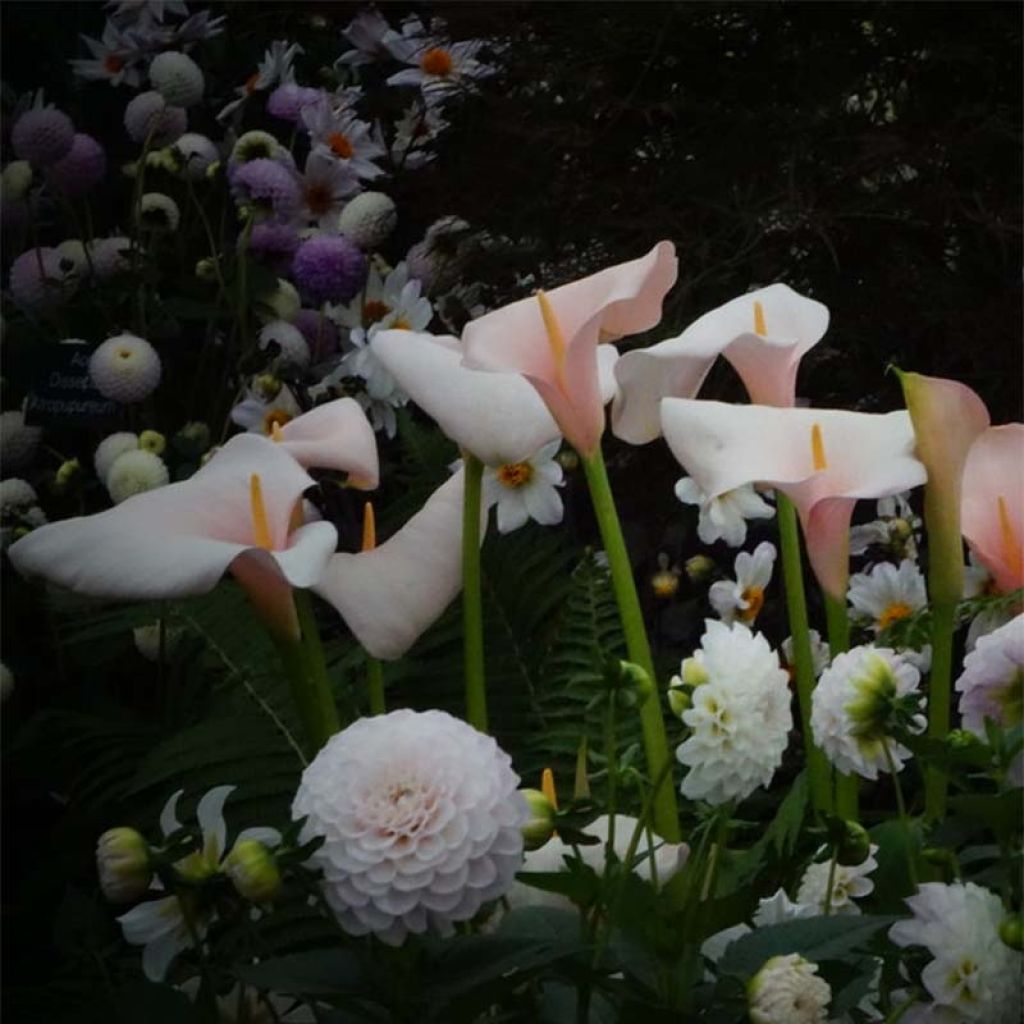

Zantedeschia aethiopica Pink Flamingo - Arum-lily
Zantedeschia aethiopica Pink Flamingo - Arum-lily
Zantedeschia aethiopica Pink Flamingo
Calla Lily, Arum Lily
The plants arrived with slightly wilted leaves, but oh well, I hope I can save them and watch them grow and flower.
Tim huynh, 22/05/2025
Special offer!
Receive a €20 voucher for any order over €90 (excluding delivery costs, credit notes, and plastic-free options)!
1- Add your favorite plants to your cart.
2- Once you have reached €90, confirm your order (you can even choose the delivery date!).
3- As soon as your order is shipped, you will receive an email containing your voucher code, valid for 3 months (90 days).
Your voucher is unique and can only be used once, for any order with a minimum value of €20, excluding delivery costs.
Can be combined with other current offers, non-divisible and non-refundable.
Home or relay delivery (depending on size and destination)
Schedule delivery date,
and select date in basket
This plant carries a 6 months recovery warranty
More information
We guarantee the quality of our plants for a full growing cycle, and will replace at our expense any plant that fails to recover under normal climatic and planting conditions.

Does this plant fit my garden?
Set up your Plantfit profile →
Description
The Zantedeschia aethiopica 'Pink Flamingo' is a stunning pink-flowered variant of the Ethiopian Arum, slightly less vigorous than its counterpart but almost as hardy. Its flowers, pink in bud, open into large cones or pale pink spathes on the outside, almost white on the inside, surrounding a yellow spadix. They appear in spring and summer, well above lush foliage of a beautiful dark green. Essential at the edge of water points or in damp flower beds, its flowers are also very beautiful and long-lasting in bouquets. Hardy to -8/-10°C, this perennial will need protection or lifting in colder areas.
Originally from South Africa, particularly from Transvaal, the Ethiopian Arum has become naturalized worldwide. Like it, the 'Pink Flamingo' Arum is a tuberous herbaceous perennial plant belonging to the Arum family. From April-May, numerous long-petioled leaves with a very wide, shiny, dark green lamina emerge from its stump. The plant quickly forms imposing clumps of 70 to 80cm (28 to 32in) in all directions. Flowering occurs from June to August depending on the regions, and it can continue for several weeks as long as the plant does not lack water. This flowering can be easily advanced by greenhouse forcing. The magnificent inflorescences are composed of a small central column called a spadix, pale yellow in colour, discreet, surrounded by an evase spathe, in the shape of a cone, with a velvety texture that blends with the rough touch of parchment. The colour of the flower is more pink on the outside, but a rosy white on the inside. The throat is also more pink. The fragrance, very light, can be perceived by burying one's nose in the heart of the flowers. It evokes the scent of anise and rice powder.
Long considered cold and static flowers, used to adorn solemn bouquets or with religious connotations, Arums are making a comeback. Their generous clumps enhance the edges of well-designed ponds, the background of flower beds in moist soil, large borders, and allow for beautiful pots to be created for the terrace or balcony. Zantedeschia aethiopica 'Pink Flamingo' can even be grown under 20 to 30cm (8 to 12in) of water during the growing season. It pairs well with Solomon's Seals, ferns, and Astilbes. In colder regions, it is advisable to cultivate Ethiopian Arums in soil that is certainly moist and rich in humus, but well-drained, and to protect the stumps in winter with a thick layer of dead leaves.
Zantedeschia aethiopica Pink Flamingo - Arum-lily in pictures


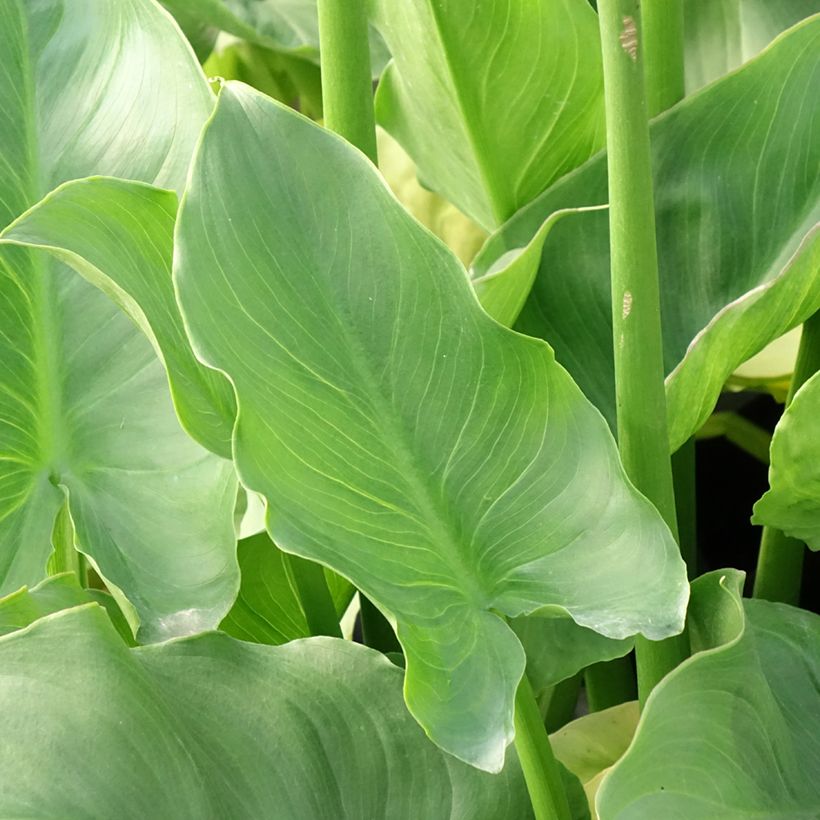

Plant habit
Flowering
Foliage
Botanical data
Zantedeschia
aethiopica
Pink Flamingo
Araceae
Calla Lily, Arum Lily
Cultivar or hybrid
Other Arums
View all →Planting and care
Plant the 'Pink Flamingo' Arum plants in good garden soil enriched with compost. Choose a cool and deep soil, even flooded, and a sunny exposure in cooler climates, or partial shade, avoiding the sun during the hottest hours in southern regions. Indeed, this could cause burns on the foliage. In a pot, the Arum should be watered every evening in summer. You can place a saucer under the pot to create a kind of reservoir and save water.
Planting period
Intended location
Care
Planting & care advice
-
, onOrder confirmed
Reply from on Promesse de fleurs
Haven't found what you were looking for?
Hardiness is the lowest winter temperature a plant can endure without suffering serious damage or even dying. However, hardiness is affected by location (a sheltered area, such as a patio), protection (winter cover) and soil type (hardiness is improved by well-drained soil).

Photo Sharing Terms & Conditions
In order to encourage gardeners to interact and share their experiences, Promesse de fleurs offers various media enabling content to be uploaded onto its Site - in particular via the ‘Photo sharing’ module.
The User agrees to refrain from:
- Posting any content that is illegal, prejudicial, insulting, racist, inciteful to hatred, revisionist, contrary to public decency, that infringes on privacy or on the privacy rights of third parties, in particular the publicity rights of persons and goods, intellectual property rights, or the right to privacy.
- Submitting content on behalf of a third party;
- Impersonate the identity of a third party and/or publish any personal information about a third party;
In general, the User undertakes to refrain from any unethical behaviour.
All Content (in particular text, comments, files, images, photos, videos, creative works, etc.), which may be subject to property or intellectual property rights, image or other private rights, shall remain the property of the User, subject to the limited rights granted by the terms of the licence granted by Promesse de fleurs as stated below. Users are at liberty to publish or not to publish such Content on the Site, notably via the ‘Photo Sharing’ facility, and accept that this Content shall be made public and freely accessible, notably on the Internet.
Users further acknowledge, undertake to have ,and guarantee that they hold all necessary rights and permissions to publish such material on the Site, in particular with regard to the legislation in force pertaining to any privacy, property, intellectual property, image, or contractual rights, or rights of any other nature. By publishing such Content on the Site, Users acknowledge accepting full liability as publishers of the Content within the meaning of the law, and grant Promesse de fleurs, free of charge, an inclusive, worldwide licence for the said Content for the entire duration of its publication, including all reproduction, representation, up/downloading, displaying, performing, transmission, and storage rights.
Users also grant permission for their name to be linked to the Content and accept that this link may not always be made available.
By engaging in posting material, Users consent to their Content becoming automatically accessible on the Internet, in particular on other sites and/or blogs and/or web pages of the Promesse de fleurs site, including in particular social pages and the Promesse de fleurs catalogue.
Users may secure the removal of entrusted content free of charge by issuing a simple request via our contact form.
The flowering period indicated on our website applies to countries and regions located in USDA zone 8 (France, the United Kingdom, Ireland, the Netherlands, etc.)
It will vary according to where you live:
- In zones 9 to 10 (Italy, Spain, Greece, etc.), flowering will occur about 2 to 4 weeks earlier.
- In zones 6 to 7 (Germany, Poland, Slovenia, and lower mountainous regions), flowering will be delayed by 2 to 3 weeks.
- In zone 5 (Central Europe, Scandinavia), blooming will be delayed by 3 to 5 weeks.
In temperate climates, pruning of spring-flowering shrubs (forsythia, spireas, etc.) should be done just after flowering.
Pruning of summer-flowering shrubs (Indian Lilac, Perovskia, etc.) can be done in winter or spring.
In cold regions as well as with frost-sensitive plants, avoid pruning too early when severe frosts may still occur.
The planting period indicated on our website applies to countries and regions located in USDA zone 8 (France, United Kingdom, Ireland, Netherlands).
It will vary according to where you live:
- In Mediterranean zones (Marseille, Madrid, Milan, etc.), autumn and winter are the best planting periods.
- In continental zones (Strasbourg, Munich, Vienna, etc.), delay planting by 2 to 3 weeks in spring and bring it forward by 2 to 4 weeks in autumn.
- In mountainous regions (the Alps, Pyrenees, Carpathians, etc.), it is best to plant in late spring (May-June) or late summer (August-September).
The harvesting period indicated on our website applies to countries and regions in USDA zone 8 (France, England, Ireland, the Netherlands).
In colder areas (Scandinavia, Poland, Austria...) fruit and vegetable harvests are likely to be delayed by 3-4 weeks.
In warmer areas (Italy, Spain, Greece, etc.), harvesting will probably take place earlier, depending on weather conditions.
The sowing periods indicated on our website apply to countries and regions within USDA Zone 8 (France, UK, Ireland, Netherlands).
In colder areas (Scandinavia, Poland, Austria...), delay any outdoor sowing by 3-4 weeks, or sow under glass.
In warmer climes (Italy, Spain, Greece, etc.), bring outdoor sowing forward by a few weeks.






























